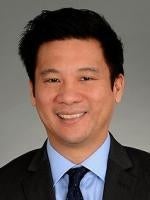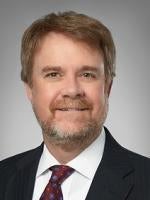We previously described the “framework” for an agreement to reinstate California’s Supplemental Paid Sick Leave. Governor Newsom signed Senate Bill (“SB”) 114 into law on February 9, 2022. The specifics of the bill are summarized below.
California’s New COVID-19 Supplemental Paid Sick Leave Law
In 2021, California enacted Senate Bill (“SB”) 95, which provided COVID-19 Supplemental Paid Sick Leave (“CSPSL”) to covered employees. SB 95 expired on September 30, 2021. SB 114 is the new CSPSL law that will apply in 2022.
SB 114 is similar to SB 95 in many ways:
-
Both apply to employers with more than 25 employees;
-
Both apply retroactively; and
-
Both cap CSPSL at $511 per day or $5,110 in the aggregate.
There are, however, critical differences between the two laws. For example:
-
SB 95 provided up to 80 hours of CSPSL in a single batch, while SB 114 provides CSPSL in two batches (each batch permitting up to 40 hours of CSPSL);
-
SB 95 required wage statements to show the amount of leave available, while SB 114 requires wage statements to show the amount of leave used; and
-
Each law uses different methods of calculating the regular rate of pay for compensating CSPSL.
Amount of CSPSL
SB 114 provides CSPSL in two batches, with each batch permitting up to 40 hours of CSPSL. Full-time employees, or those who worked or were scheduled to work, on average, at least 40 hours per week in the two weeks preceding the date CSPSL is taken are entitled to 40 hours of CSPSL. Part-time employees with normal weekly schedules are entitled to the total number of hours normally scheduled for one week, not to exceed 40 hours. Part-time employees on variable schedules are entitled to seven times the average number of hours worked each day in the six months preceding the date the employee takes CSPSL, not to exceed 40 hours.
Batch 1
Employees may use up to 40 hours of CSPSL if they are unable to work or telework for the following specified reasons:
-
They are subject to a quarantine or isolation period related to COVID-19 as defined by an order or guidance of the State Department of Public Health, the federal Centers for Disease Control and Prevention (CDC), or a local public health officer who has jurisdiction over the workplace;
-
They have been advised, by a health care provider, to isolate or quarantine due to COVID-19;
-
They are experiencing symptoms of COVID-19 and seeking a medical diagnosis;
-
They are caring for a family member who is subject to a quarantine or isolation period related to COVID-19, or who has been advised to isolate or quarantine by a health care provider;
-
The employee is caring for a child whose school or place of care is closed or otherwise unavailable for reasons related to COVID-19 on the premises;
-
They are attending an appointment for themselves or a family member to receive a COVID-19 vaccine or booster; or
-
They are experiencing symptoms—or caring for a family member experiencing symptoms—related to a COVID-19 vaccine or booster that prevents them from working or teleworking.
Employees may determine how many hours of CSPSL to use, up to the total number of hours of their entitlement, except they may be limited to 24 hours of CSPSL for the vaccine-related reasons listed above (# 6 and 7) unless they provide medical certification requiring additional time. This limitation applies for each vaccine or booster shot.
Batch 2
Employees may use up to 40 additional hours of CSPSL for the following two reasons:
-
The employee tests positive for COVID-19. The employer may require the employee to submit their original positive test, and may also require the employee to submit to a diagnostic test on or after the 5th day after the positive test was taken and provide documentation of those results. Employers must make the confirmatory tests available at no cost to the employee. There is no obligation to provide additional hours under Batch 2 if the employee refuses to provide documentation of the initial positive test and/or the confirmatory test; or
-
The employee’s family member, for whom they are providing care, tests positive for COVID-19. The employer may require the employee to provide documentation of the family member’s positive test results before paying the additional leave. There is no obligation to provide additional hours under Batch 2 if the employee refuses to provide documentation of the family member’s positive test.
Interaction With Other Leaves
As with SB 95, CSPSL under SB 114 is in addition to any other “regular” paid sick leave. Employers must make CSPSL available upon “oral or written request.” Additionally, employers may no longer require an employee to use CSPSL as part of providing the employee “exclusion pay” required by the Cal-OSHA Emergency Temporary Standards, as described below.
Employers cannot require employees to use any other paid or unpaid leave, paid time off, or vacation time before using, or in lieu of using, CSPSL.
Calculating the CSPSL Rate of Pay
Unlike SB 95, SB 114’s prescribed method of rate of pay calculations aligns with the rate of pay calculations under California’s Healthy Workplaces, Healthy Families Act. Thus, employers must pay non-exempt employees by either:
-
Using the same manner as the regular rate of pay for the workweek in which the employee uses paid sick time (whether or not the employee actually works overtime in that workweek); or
-
Dividing the employee’s total wages (not including overtime premium pay) by the employee’s total non-overtime hours worked in the full pay periods occurring within the prior 90 days of employment; provided that (for non-exempt employees paid by piece rate, commission, or another method that uses all hours to determine the regular rate of pay) total wages, not including overtime premium pay, must be divided by all hours to determine the correct amount of CSPSL.
Exempt employees must be paid in the same manner as the employer calculates wages for other forms of paid leave time.
CSPSL Payment Cap
Similar to SB 95, SB 114 caps CSPSL at $511 per day or $5,110 in the aggregate. Employees who have reached these caps are permitted to use other available paid leave (e.g., paid vacation, paid time off, or regular paid sick leave), provided that the terms of the policies allow for the use of leave under such circumstances, to cover their otherwise unpaid time off. CSPSL payments must be made no later than the payday for the next regular payroll period after the leave was taken.
Wage Statement Requirements
SB 114 requires employers to list the amount of 2022 CSPSL the employee has used through the pay period in which it was due to be paid. A zero should be listed if an employee has not used any 2022 CSPSL yet. This wage statement requirement is not enforceable until the next full pay period following February 19, 2022.
Posting Requirement
Employers must post a notice (or disseminate notice through electronic means if employees do not frequent a workplace) to employees regarding the new CSPSL rules. The California Labor Commissioner is required to publish a model notice by February 16.
Use of 2022 CSPSL for Exclusion Pay Required Under Cal/OSHA’s COVID-19 Emergency Temporary Standard (“ETS”)
As previously noted, Cal/OSHA’s ETS requires employers to exclude employees who have a confirmed COVID-19 case or who are a “close contact” of an individual who has a confirmed case, and to provide exclusion pay to those excluded employees whose exposure was work-related. Previously, employers could require employees to first use and exhaust their CSPSL before the employer provided exclusion pay. SB 114 eliminates this option, and now, employers cannot require an employee to exhaust their 2022 CSPSL before providing employer exclusion pay.
Next Steps
Employers employing more than 25 employees should review their sick leave policies, update their wage statements, and ensure they are in compliance with SB 114’s requirements. Employers should also monitor the California Labor Commissioner’s webpage, as guidance is forthcoming.
The legal landscape continues to evolve quickly and there is a lack of clear-cut authority or bright line rules on implementation. This article is not intended to be an unequivocal, one-size fits all guidance, but instead represents our interpretation of where applicable law currently and generally stands. This article does not address the potential impacts of the numerous other local, state and federal orders that have been issued in response to the COVID-19 pandemic, including, without limitation, potential liability should an employee become ill, requirements regarding family leave, sick pay, and other issues.
Victoria Ayeni also contributed to this article.





 />i
/>i
